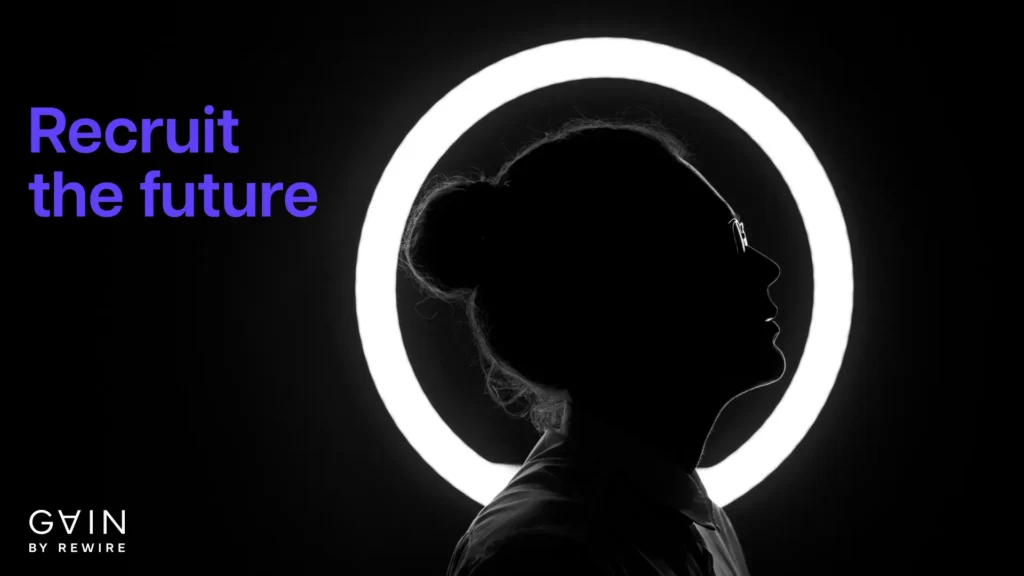Rewire CEO Wouter Huygen reviews the arguments for and against GenAI heralding the next industrial revolution, and how business leaders should prepare.

Is generative AI under- or overhyped? Is it all smoke and mirrors, or is it the beginning of a new industrial revolution? How should business leaders respond? Should they rush to adopt it or should they adopt a wait-and-see approach?
Finding clear-cut answers to these questions is a challenge for most. Experts in the field are equally divided between the cheerleaders and the skeptics, which adds to the apparent subjectivity of the debate.
The GenAI cheerleaders can point to the fact that performance benchmarks keep being beaten. Here the underlying assumption is the “AI Scaling Hypothesis”. That is, as long as we throw in more data and computing power, we’ll make progress. Moreover, the infrastructure required for GenAI at scale is already there: an abundance of cloud-based data and software; the ability to interact with the technology using natural language. Thus, innovation cycles have become shorter and faster.
On the other hand, GenAI skeptics make the following points: first, the limitations of GenAI are not bugs, they’re features. They’re inherent to the way the technology works. Second, GenAI lacks real world understanding. Third, LLMs demonstrate diminishing returns. In short, there are hard limits to the capabilities of GenAI.
The lessons of History indicate that while there might be some overhype around GenAI, the impact could be profound – in the long run. Leaders should therefore develop their own understanding of GenAI and use it to define their vision. Shaping the future is a long-term game that starts today.
Watch the video (full transcript below).
The transcript has been edited for clarity and length.
Generative AI: the new magic lantern?
Anyone recognizes this? If you look closely, not much has changed since. Because this is a basic slide projector. It’s the Magic Lantern, invented around 1600. But it was not only used as a slide projector. It was also used by charlatans, magicians, people entertaining audiences to create illusions. This is the origin of the saying “smoke and mirrors”. Because they used smoke and mirrors with the Magic Lantern to create live projections in the air, in the smoke. So the Magic Lantern became much more than a slide projector – actually a way of creating illusions that were by definition not real.
You could say that Artificial Intelligence is today’s Magic Lantern. We’ve all seen images of Sora, OpenAI’s video production tool. And if you look at OpenAI’s website, they claim that they’re not working on video production. They actually intend to model the physical world. That’s a very big deal if that is true. Obviously it’s not true. At least I think I’m one of the more sceptical ones. But those are the claims being made. If we can actually use these models to model the physical world, that’s a big step towards artificial general intelligence.
Is GenAI overhyped? Reviewing the arguments for and against
If AI is today’s Magic Lantern, it begs the question, where are the smoke and where are the mirrors? And people who lead organizations should ponder a few questions: How good are AI capabilities today? Is AI overhyped? What is the trajectory? Will it continue to go at this pace? Will it slow down? Re-accelerate? How should I respond? Do we need to jump on it? Do we need to wait and see? Let everybody else do the first experience, experience the pains, and then we will adopt whatever works? What are the threats and what are the risks? These are common questions, but given the pace of things, they are crucial.
To answer these questions, one could look to the people who develop all this new technology. But the question is whether we can trust them. Sam Altman is looking for $7 trillion. I think the GDP of Germany is what? $4 trillion or $5 trillion. Last week Eric Schmidt, ex-Google CEO, stated on TV that AI is underhyped. He said the arrival of a non-human intelligence is a very, very big deal. Then the interviewer asked: is it here? And his answer was: it’s here, it’s coming, it’s almost here. Okay, so what is it? Is it here or is it coming? Anyway, he thinks it’s underhyped.
We need to look at the data, but even that isn’t trivial. Because if you look at generative AI, Large Language Models and how to measure their performance, it’s not easy. Because how do you determine if a response is actually accurate or not? You can’t measure it easily. In any case, we see the field progressing, and we’ve all seen the news around models beating bar exams and so on.
The key thing here is that all this progress is based on the AI scaling hypothesis, which states that as long as we throw more data and compute at it, we’ll advance. We’ll get ahead. This is the secret hypothesis that people are basing their claims on. And there are incentives for the industry to make the world believe that we’re close to artificial general intelligence. So we can’t fully trust them in my opinion, and we have to keep looking at the data. But the data tells us we’re still advancing. So what does that mean? Because current systems are anything but perfect. You must have seen ample examples. One is from Air Canada. They deployed a chatbot for their customer service, and the chatbot gave away free flights. It was a bug in the system.
That brings us to the skeptical view. What are the arguments? One is about large language modelling or generative AI in general: the flaws that we’re seeing are not bugs to be fixed. The way this technology works, by definition, has these flaws. These flaws are features, they’re not bugs. And part of that is that the models do not represent how the world works. They don’t have an understanding of the world. They just produce text in the case of a Large Language Model.
On top of that, they claim that there are diminishing returns. If you analyze the performance, for instance, of the OpenAI stuff that’s coming out, they claim that if you look at the benchmarks, it’s not really progressing that much anymore. And OpenAI hasn’t launched GPT-5, so they’re probably struggling. And all the claims are based on these scaling laws, and those scaling laws can’t go on forever. We’ve used all the data in the world, all the internet by now. So we’re probably hitting a plateau. This is the skeptical view. So on the one hand we hear all the progress and all the promises, but there are also people saying, “Look, that’s actually not the case if you really look under the hood of these systems.”
As for questions asked by organization leaders: “What do I need to do?” “How fast is this going?” Here, the predictions vary. In the Dutch Financial Times, here’s an economist saying it’s overhyped, it’s the same as always, all past technology revolutions took time and it will be the same this time. On the other hand, a recent report that came out saying this time is different: generative AI is a different type of technology and this is going to go much faster. The implication being that if you don’t stay ahead, if you don’t participate as an organization, you will be left behind soon.
The argument for generative AI is that the infrastructure is already there. It’s not like electricity, where we had to build power lines. For generative AI, the infrastructure is there. The cloud is rolled out. Software has become modular. And the technology itself is very intuitive. It’s very easy for people to interact with it because it’s based on natural language. All of those arguments are the basis for saying that this is going to go much faster. And I think some of us recognize that.
Looking ahead: how leaders should prepare
There’s a difference between adopting new tools and really changing your organization. When we think about the implications, at Rewire we try to make sense of these polarized views and form our own view of what is really happening and what it means for our clients, for our partners, and the people we work with. We have three key takeaways.
The first one is that we firmly believe that everybody needs to develop their own intuition and understanding of AI. Especially because we’re living in the smoke and mirror phase. It means that it’s important for people who have the role of shaping their organization to understand the technology and develop their own compass of what it can do, to navigate change.
The second is that you need to rethink the fundamentals. You need to think about redesigning things, re-engineering things, re-imagining your organization, asking what if, rather than adopting a tool or a point solution. You must think how your organization is going to evolve, what will it look like in five years’ time and how do we get there?
The third, is that yes, I agree with the fact of this Andrew McAfee, the economist that says generative AI is different because it goes faster. To a certain extent that’s true. But not to the point where full business models and full organizations and end-to-end processes change. Because that’s still hard work, it’s transformational work that doesn’t happen overnight. So the answers are nuanced. It’s not one extreme or the other. It is a long-term game to reap the benefits of this new technology.





